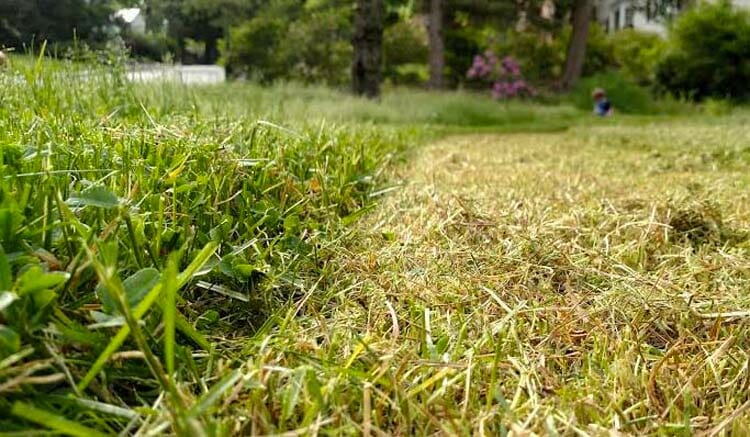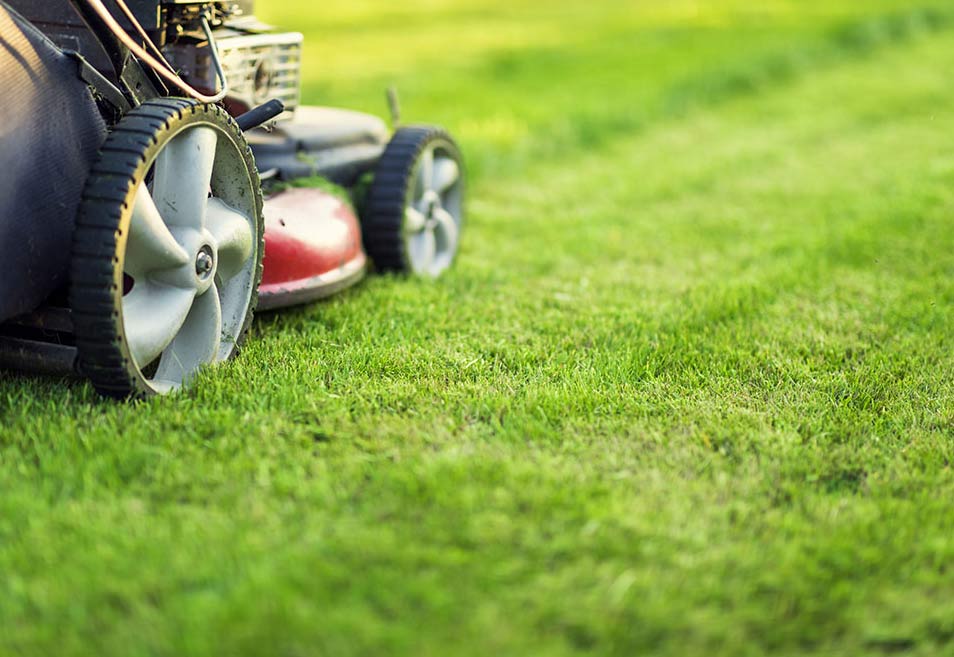Cutting your grass might appear to be an easy task, yet it demands considerable skill and precision. This skill and precision play a vital role in identifying the appropriate length at which to cut your lawn.
Some homeowners cut their grass lower than recommended because they feel it will save them time and reduce the amount of work required to maintain their lawns. While this may seem a time-saving hack, you’ll only be buying a few extra days between mowings – and that’s the least of your problems.
If you make a habit of cutting your grass too short, you’ll be left with a range of problems that can disrupt your lawn’s health and the beauty of your yard.

What we cover
ToggleThe effects of cutting your grass too short
Deterioration of lawn health
Cutting your grass too short will cause your lawn’s health to deteriorate generally. The reason for this is that your grass, just like any other plant, uses photosynthesis to generate nutrients. The shorter the grass, the less surface area there is for photosynthesis to occur.
As a result, your grass won’t have access to sufficient nutrients, and its growth will suffer as a consequence. This affects not just your grass but you as well. The grass will appear more thin and sparse, and you, the owner, will have no choice but to spend more money on fertilizers to supplement the nutrients.
Thinning of lawn
Continually cutting your grass too short can reduce the overall density and affect its ability to grow back robustly. This makes your lawn sparse over time, creates patchy and uneven areas, and ultimately reduces your yard’s visual appeal and health.
Furthermore, short, weakened grass will expose the soil and lead to rapid moisture evaporation. This dries out the ground, making it less hospitable for grass growth.
Abundance of lawn weeds
When you cut your grass too short, invasive weeds such as crabgrass and dandelions are far more likely to appear. When grass is not as tall as it should be, more sunlight reaches the soil, making it a perfect condition for weed seeds to germinate.
Your overly-short grass will focus all its energy on recovering and growing and as a result, will not have enough strength to fight off these weeds.
Increased vulnerability to pests and diseases
In addition to weeds, unwanted insects can invade your lawn if the grass is cut too short. While everyday insects can be good for a healthy lawn, some can cause extensive damage while your grass is weak.
Grubs such as billbugs and white grubs, which feed on grass roots, can deal a fatal blow if they invade your lawn. Aside from suffering an invasion from pests, your short and weakened grass also becomes more susceptible to fungal infections.
Reduced resilience to environmental stress
When you cut your grass too short, it will be less likely to handle environmental stressors like drought, extreme temperatures, or heavy foot traffic. In such a weakened state, it would have less energy to regenerate and repair, making it more susceptible to damage.
What to do if you cut your grass too short
You can try to repair any damage caused if you have been cutting your grass too short. To do this, the first thing is to leave your grass alone and let it gradually grow back to its normal height. Once this is achieved, ensure that you never again remove more than one-third of the blade length of your grass.
If you’re going to take the step mentioned above, it’s advisable to water your grass deeply through proper irrigation. Doing this will help your lawn recover faster and be more healthy.

How short should you cut your grass?
The ideal height often depends on the type of grass you have and your climate. In terms of exact measurements, there is no perfect answer.
That being said, a general rule of thumb is to cut your grass down to 2 to 2 ½ inches (5-6 cm) for best results. This healthy height will provide enough shade on the soil to fend off weeds and retain water.
How often should you cut your grass?
When thinking about how often to cut your grass, a general rule is the “one-third rule.” You should avoid cutting more than one-third of your grass at a time. This should be put into consideration when deciding how tall you want your grass to be. For example, if you intend to cut your grass to a length of 6cm, you should cut it when it reaches around 9cm, and not later.
It’s noteworthy that your grass will grow quickly in the summer, and as such, you may have to mow twice weekly to stick to the one-third rule. Conversely, it will grow much slower in the winter, so fortnightly mowing may be sufficient. On average, during early spring, this could be roughly every two weeks.
Conclusion
Cutting your grass too short can have various negative effects, from thinning out of your lawn to increased vulnerability to diseases and pests. As a homeowner, you can ensure a vibrant and healthy lawn by following the recommended mowing heights and sticking to the one-third rule.
However, if all else fails, reaching out to a professional grass technician is never a bad deal. These people possess the experience and skill required to help you acquire the lawn of your dreams.






